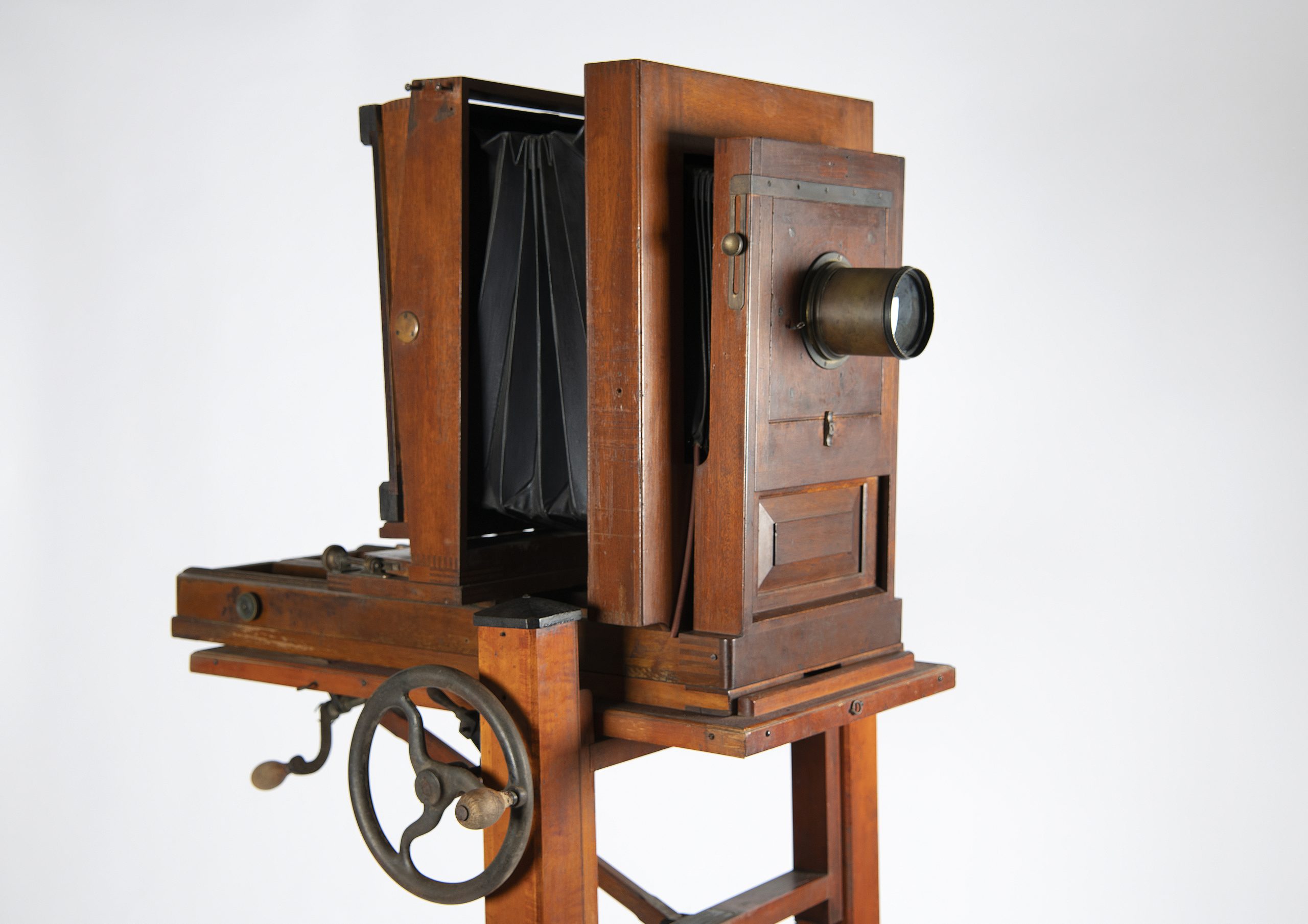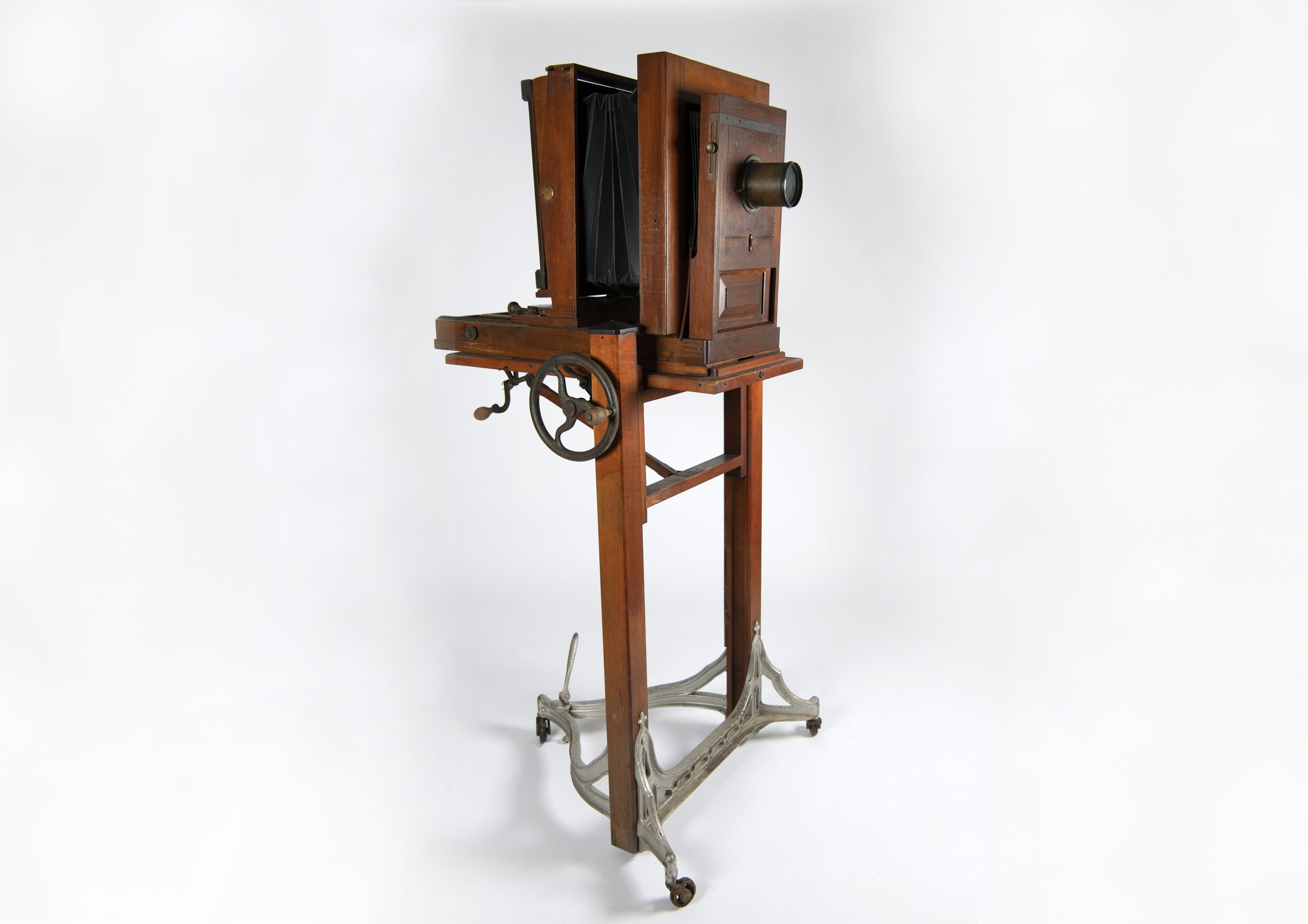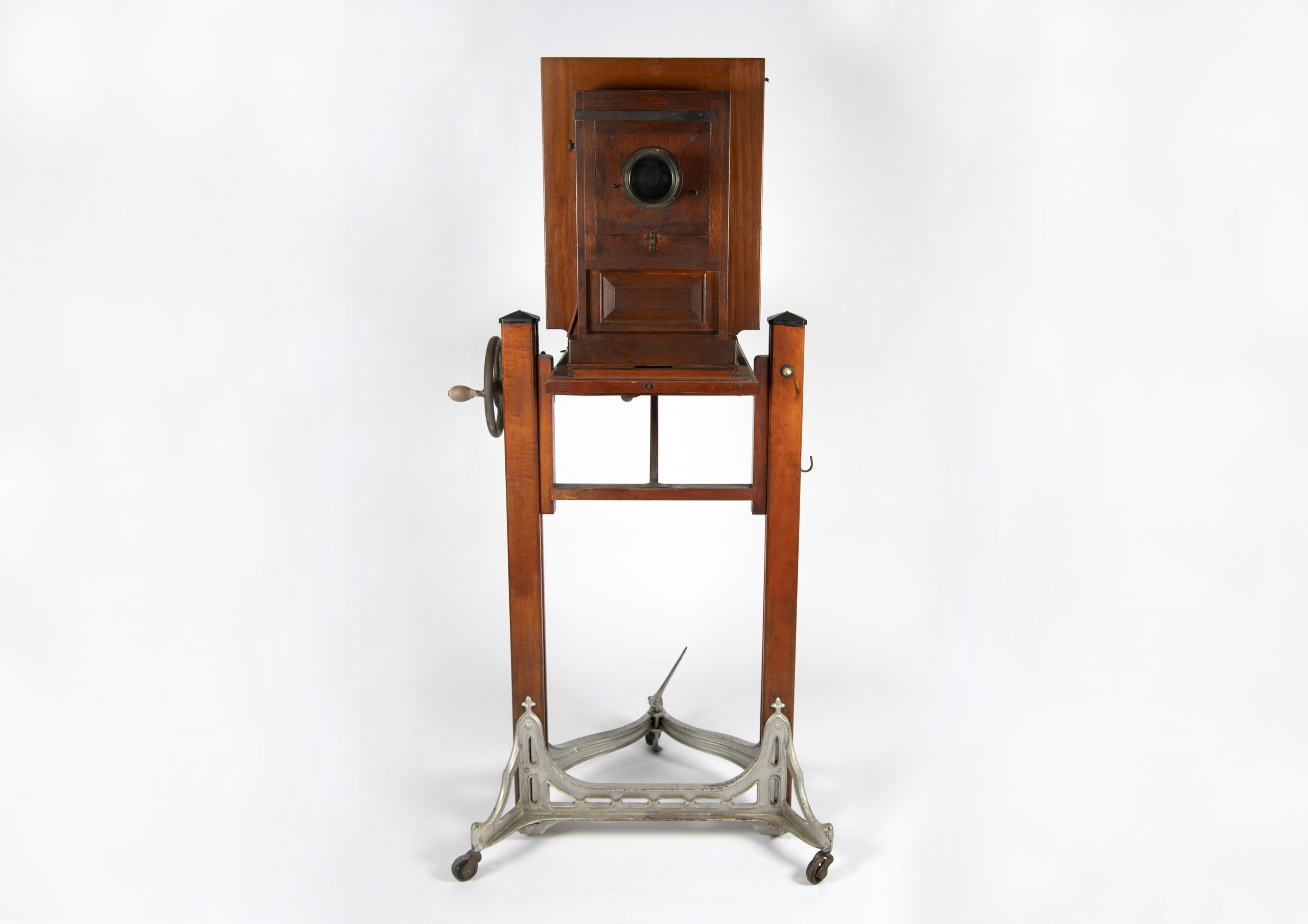Solomon’s Lens
The Legacy of Solomon Studios at Tamworth
We take pictures to remember, freezing a moment forever, afraid a memory will be lost. Our smartphones have made the act of taking a photo something we do almost without thinking. It is now so easy to snap a portrait of a friend, that around the world some 54,400 images are snapped every second. It wasn’t always like this.
Cameras like this one come from a time when having your portrait taken was a special event with the image truly treasured by loved ones. During the First World War, many enlisted soldiers had their portrait taken as a keepsake for their families, showing them proudly in their uniforms, many felt they were about to head off on a great adventure. When that adventure turned to nightmares on the shores of Gallipoli or the battlefields of France, the portraits were often the only memento families had.
This camera was an essential tool in Tamworth’s Solomon Studio’s, a photographic business that ran from 1891 to 1974. The studio was run by three generations in succession of the Solomon family, beginning with George Albert Solomon. To think of those poignant images and the young men staring back at us through time, this camera is what captured many of those pictures.
Compared to now, using this camera was quite a process. The photographer had to manually make sure the camera had the correct shutter speed, aperture setting and that there was enough lighting. Aesthetically, the photographer arranged the subject, making them relaxed before pressing the shutter. The glass negative was then developed and printed a paper photograph.
As photography became cheaper and simpler, this camera was wheeled out into the back shed and forgotten until its rediscovery in 2020.
Like the soldier portraits of Tamworth’s ANZAC Roll of Honour slide collection, that were also forgotten until being rediscovered in 2003, both the camera and the surviving glass plate negatives are museum treasures.








